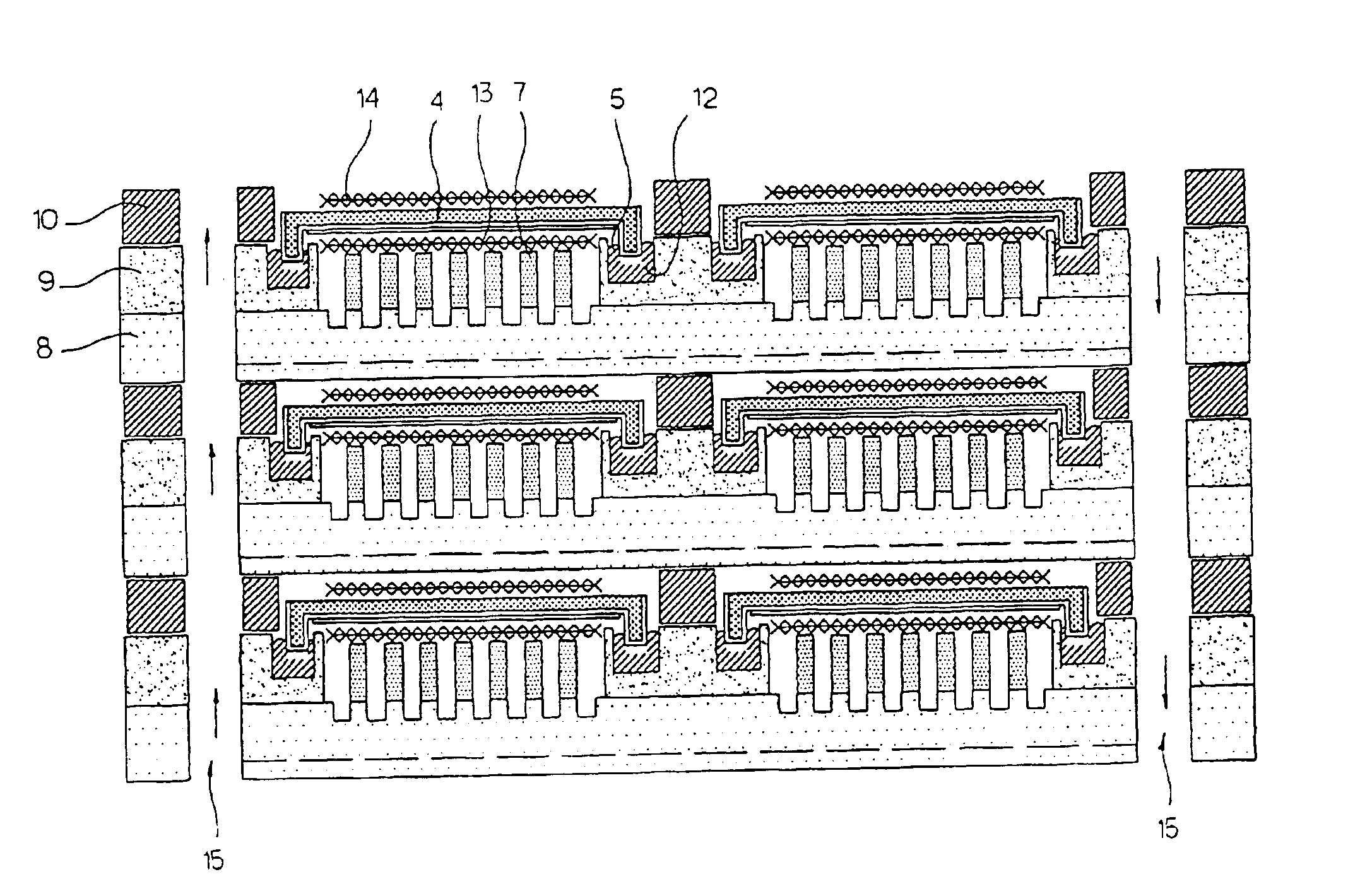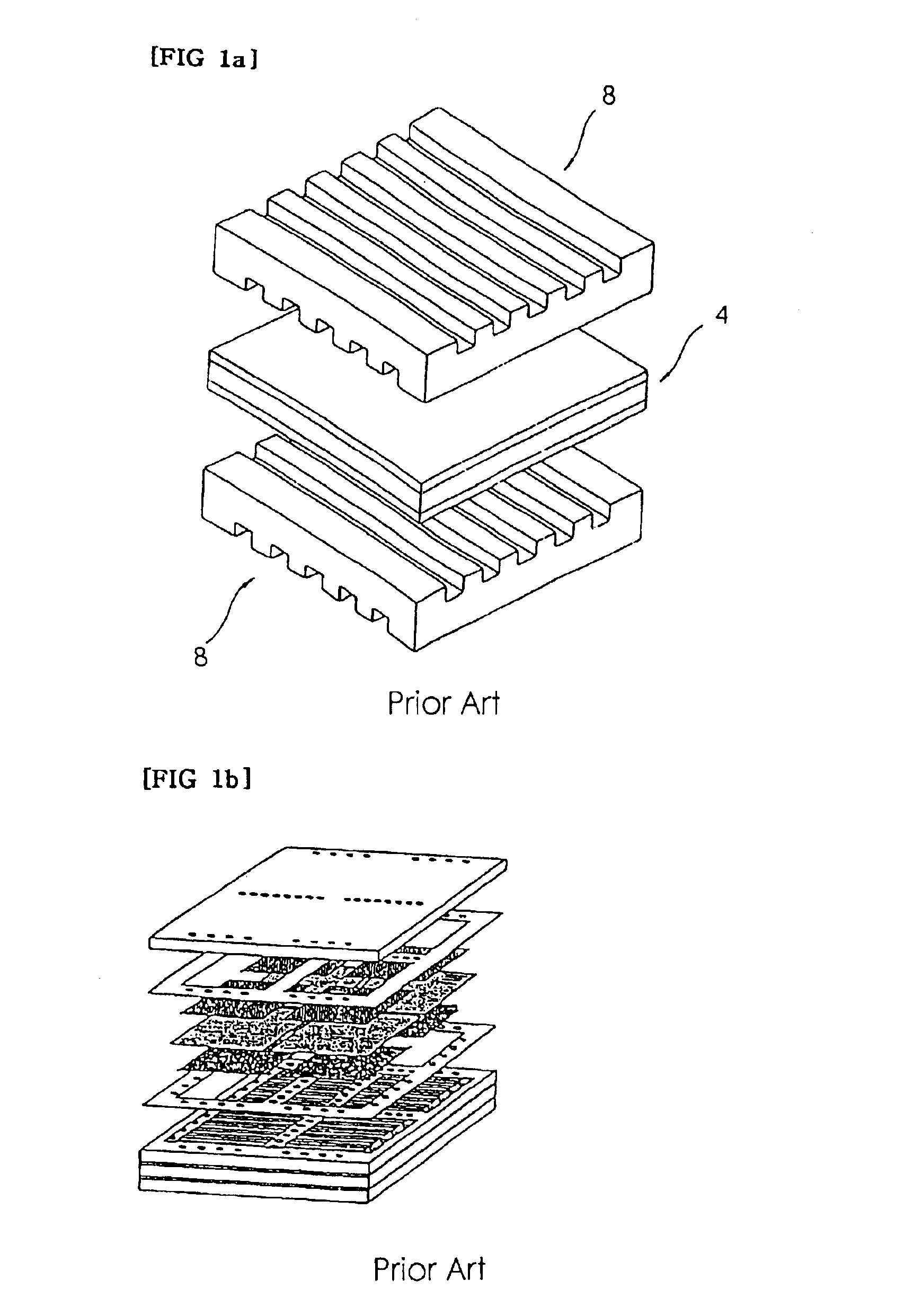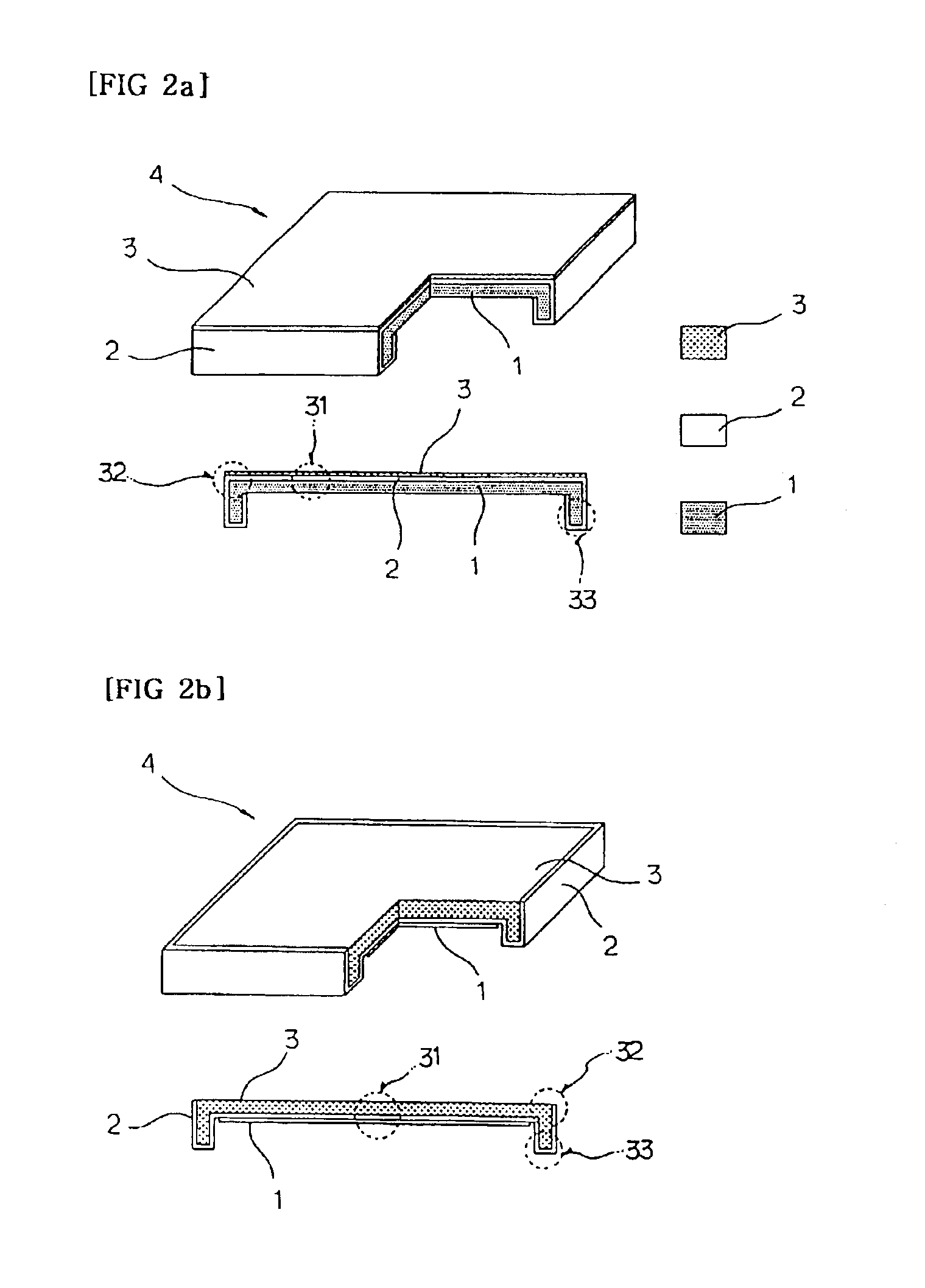Single cell and stack structure for solid oxide fuel cell stacks
a fuel cell and single cell technology, applied in the field of solid oxide fuel cells, can solve the problems of difficult production, less likely to be practicably used, and gas or oxidizing gas to permeate,
- Summary
- Abstract
- Description
- Claims
- Application Information
AI Technical Summary
Benefits of technology
Problems solved by technology
Method used
Image
Examples
example 1
A Process of Producing a Fuel Electrode (Anode) Support Type Single Cell Which is Bent Downwardly at Four Sides, and a Process of Producing an SOFC Stack Using Such Single Cells
In order to produce a desired fuel electrode (anode) support type single cell, NiO powder and yittria stabilized zirconia power (ZrO2+8Y2O3, 8YSZ) were primarily mixed together at a weight ratio of 50:50, thus preparing a powder mixture. Thereafter, 20% graphite powder was mixed with the powder mixture, thus forming a starting material for substrates. A porous substrate, or a fuel electrode layer 1 having a porosity of 40%, was produced using the starting material. In such a case, the porous substrate 1 had a shape of FIG. 2a, was sintered ultimately into a square size of 55×55 mm, with a thickness of a square portion 31 of 1˜2 mm, an outside height of a bent support portion 33 of about 3 mm, an inside height of the bent support portion 33 of about 1˜2 mm, and a thickness of the bent support portion 33 of abo...
example 2
A Process of Producing a Air Electrode (Cathode) Support Type Single Cell Which is Bent Downwardly at Four Sides, and a Process of Producing an SOFC Stack Using Such Single Cells
In order to produce a desired air electrode support type single cell 4, LSM (La0.8Sr0.2MnO3) powder was mixed with graphite powder prior to performing conventional forming and heat treating processes, thus forming a porous substrate, or an air electrode layer 3 having a porosity of 40%. In such a case, the porous cathode substrate 3 had a shape shown in FIG. 2b, with a square size of 55×55 mm, a thickness of a square portion 31 of 1˜2 mm, an outside height of a bent support portion 33 of about 3 mm, an inside height of the bent support portion 33 of about 1˜2 mm, and a thickness of the bent support portion 33 of about 1˜2 mm. Thereafter, an electrolyte layer 2 was formed on the porous substrate 3 in the same manner as that described for Example 1. In addition, the lower surface of the electrolyte layer 2 was...
example 3
A Process of Producing a Self-Support (Electrolyte Support) Type Single Cell Which is Bent Downwardly at Four Sides, and a Process of Producing an SOFC Stack Using Such Single Cells
In order to produce a desired self-support (electrolyte support) type single cell 4, an electrolyte layer 2 having the shape of FIG. 2c was primarily formed using a starting material, or granule powder having a size of 20˜30 μm and being selected from doped zirconia (ZrO2), doped ceria (CeO2), doped bismuth oxide (Bi2O3), doped perovskite and a mixture thereof. Thereafter, the electrolyte layer 2 was sintered. The electrolyte layer 2 had ultimately a square size of 50×50 mm, a thickness of a square portion 31 of 150 μm, an inside height of the bent support portion 33 of 2 mm, and a thickness of the bent support portion 33 of about 150˜1000 μm. In such a case, it was also possible to make the thickness of the bent support portion 33 be 150 μm equal to that of the square portion or be 1˜2 mm in the same man...
PUM
| Property | Measurement | Unit |
|---|---|---|
| length | aaaaa | aaaaa |
| thickness | aaaaa | aaaaa |
| thickness | aaaaa | aaaaa |
Abstract
Description
Claims
Application Information
 Login to View More
Login to View More - R&D
- Intellectual Property
- Life Sciences
- Materials
- Tech Scout
- Unparalleled Data Quality
- Higher Quality Content
- 60% Fewer Hallucinations
Browse by: Latest US Patents, China's latest patents, Technical Efficacy Thesaurus, Application Domain, Technology Topic, Popular Technical Reports.
© 2025 PatSnap. All rights reserved.Legal|Privacy policy|Modern Slavery Act Transparency Statement|Sitemap|About US| Contact US: help@patsnap.com



